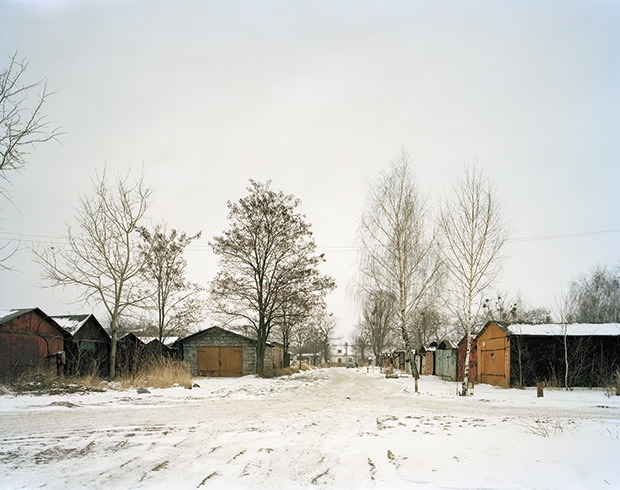The Garages of Chervonograd
2007 – 2014, Series of 185 photographs (photographed on 4×5 inch colour negative film)
The ‘garage area’ is a phenomenon that can be found in almost every Soviet urban landscape. Built in the 1970-1990s, these areas have become a significant element of the cityscapes of the former Soviet Union.
With the increasingly widespread ownership of motor vehicles in the 1970s, questions arose concerning their storage and parking. Large areas on the outskirts of cities – useful for neither urban planning nor agriculture, were typically provided for the garages. The local authorities issued a universal construction plan, but significantly left the task of building the garages themselves to the ‘lucky’ applicants. Given that private initiatives, including building initiatives, were neither demanded nor promoted, the State’s liberal attitude towards this issue is remarkable. Despite a strict standardisation stipulated by the building code they each have their own individual design. This fact contradicts the prevalent notion of the totalitarian system as one in which any form of nonconformity is avoided and prevented.

From the moment the garages were built, they began to be ‘misused’ by their owners/users, who transformed their original function to their own ends. In the early 1990s this trend only increased. The garages developed progressively – mainly on the part of the male population – into places for self-realization and / or sites of refuge from everyday life. They have become artists’ studios, rehearsal rooms for musicians, places for love affairs; they are used as storage facilities, workshops, meeting places for friends, and sites for the production, trafficking and consumption of drugs and alcohol.
This photographic work documents the emergence and development of the concept of individual freedom in the Soviet system, and its transformation under post-Soviet conditions.


